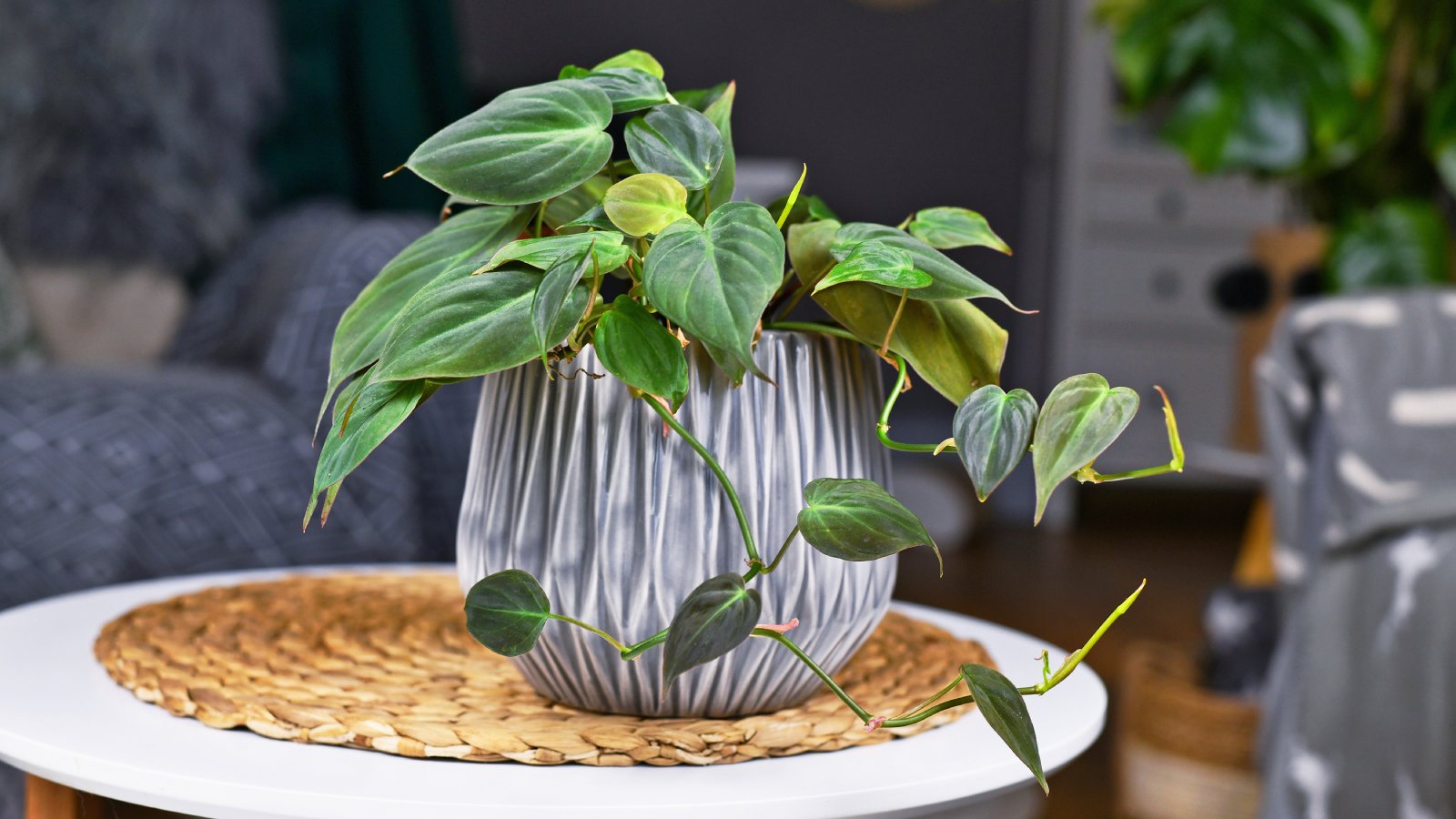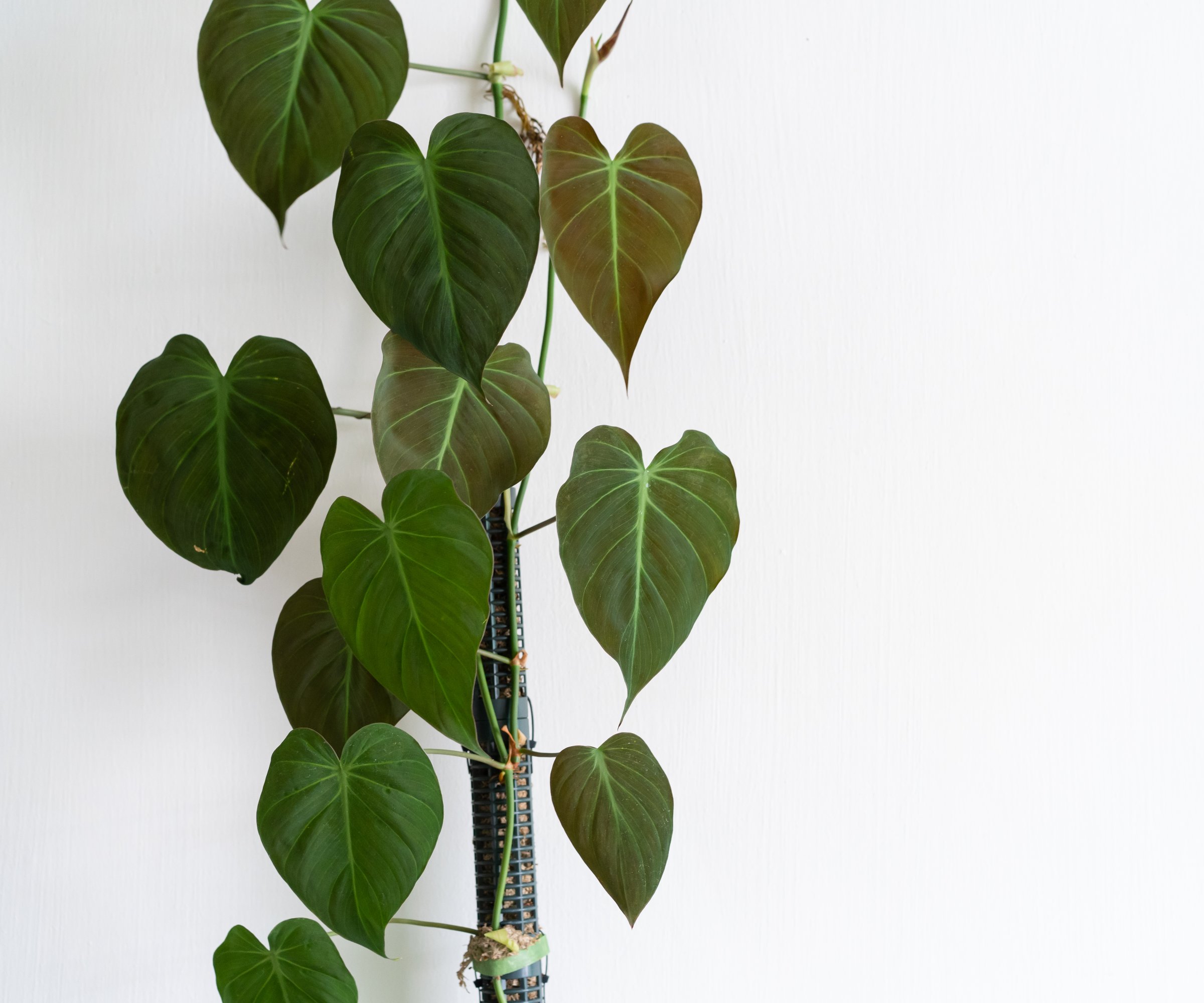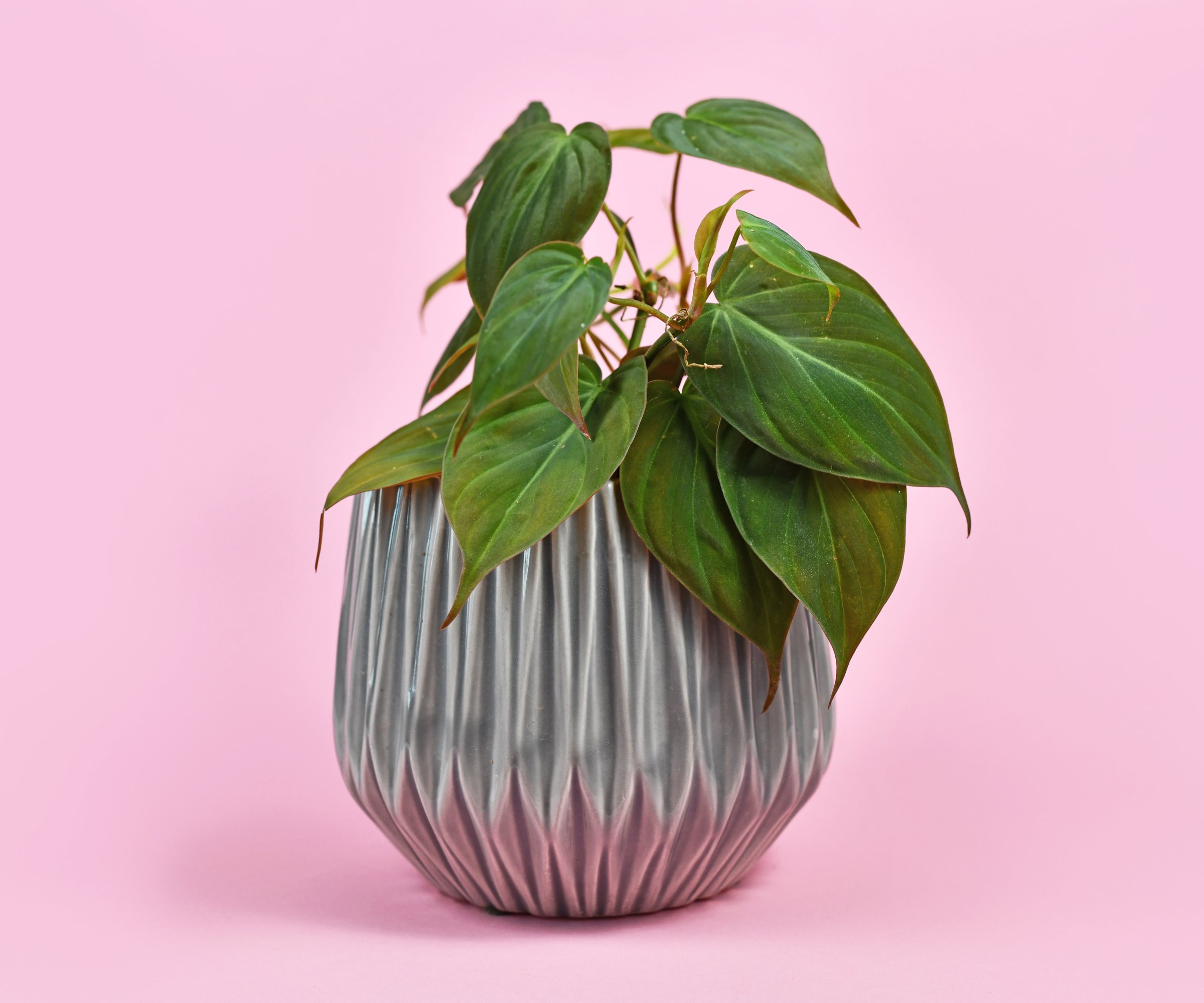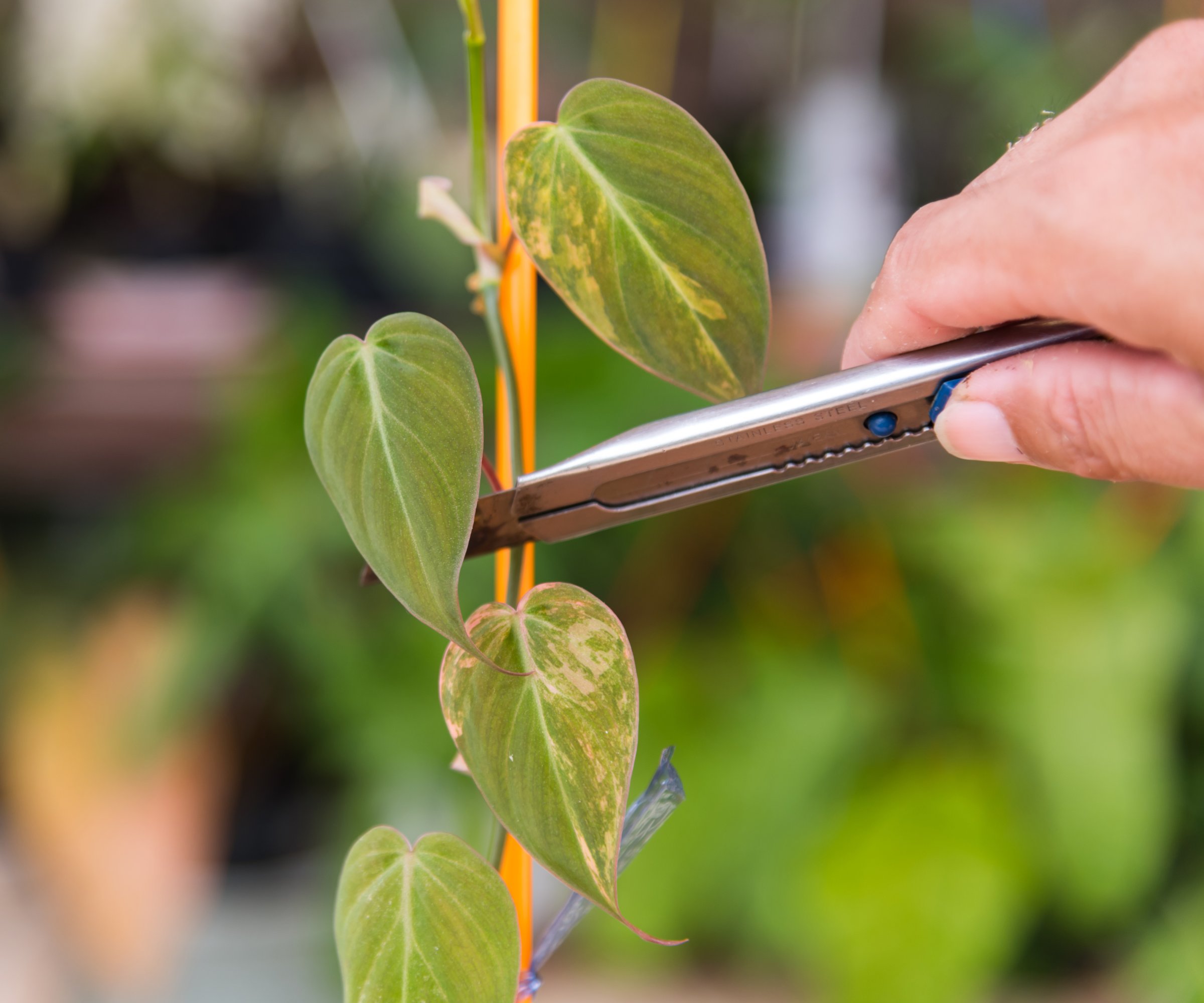How To Grow & Care For Philodendron Micans: Everything You Need To Know
Philodendron micans is a beautiful velvety vine variety that only wants 3 special things: Bright indirect light, well-draining soil, and regular watering.


Quick Philodendron Micans Facts
Botanical name: Philodendron micans
Height: 8 inches tall (20cm)
Length: 24 inches long (60cm)
Sun exposure: Part sun
Soil requirements: Loamy and well-draining
Hardiness zones: 10-12
When to plant: Spring or fall.
Learn all about this soft, velvety houseplant called philodendron micans. It’s easy to grow, but not entirely care-free. Like other special plants, it has specific needs in order to thrive. It’s worth finding the right balance and providing a way for this fascinating philodendron variety to climb.
Philodendron Micans Care

Light
The philodendron micans bears the common name of “velvet leaf philodendron,” thanks to the color and texture of their foliage. To maintain that look, these houseplants need a site with bright, indirect sun. Don’t let the sun’s rays touch the leaves or they will scorch.
Water
Here’s another plant that needs a careful balance when it comes to irrigation. Too little and the plant will wilt; too much and the roots will rot. Water only when the top inch of soil is dry and make sure the soil drains well and the container has drain holes.
Temperature & Humidity

The velvet philodendron is a tropical plant that requires warmth and humidity. Ordinary household temperatures are fine but avoid sudden temperature changes. When it comes to humidity, 50% is best, although the velvet philodendron will adapt to your home’s humidity levels. For best results, increase the humidity by any of the usual means, either adding a sauce with pebbles and water or a humidifier.
Soil
The soil must drain well for the plant to flourish. Slightly acidic, well-draining loam is best.
Use a water-soluble balanced fertilizer during the growing season. Apply every month or so, but reduce or stop fertilization after summer.
Problems, Pests, & Diseases
Philodendron micans can be attacked by the same common insects that you’ll find on other philodendrons, including aphids, scale, mealy-bugs, and spider mites. First, try removing the pests with a stream of water. Scales can be scraped off with a fingernail. Alternatively, apply Neem oil to get rid of them.
Sign up for the Gardening Know How newsletter today and receive a free copy of our e-book "How to Grow Delicious Tomatoes".
Root rot and leaf spot are fungal diseases. It’s easier to prevent these than to cure them. Overwatering is almost always the cause. If root rot hits, you’ll want to repot immediately in clean potting soil after trimming off the soft or rotting roots. For leaf spot trim off the affected leaves and reduce watering. If all else fails, use a fungicide.
Insufficient light will lead to leggy plants or loss of leaf variegation. Direct light causes scorching. Insufficient water will lead to wilting leaves. Too much water leads to fungal issues.
Pruning

Fertilizer
Serious pruning is not required for the plant’s well-being. However, feel free to trim the velvet philodendron to keep the shape looking attractive and/or remove dead foliage.
Propagation
Like other philodendrons, the velvet leaf propagates easily by rooting cuttings. You can do this in water or in well-draining soil.
Take a healthy stem with at least a few nodes, making the cut just below a node. Remove the leaves from the bottom half of the cutting and place them in either tepid water or light soil that you have moistened. If you use soil, you can dip the cut end in rooting hormone and place the pot in a plastic bag to hold in humidity. In either place, position the cutting in bright, indirect light.
If rooting in water, change the water every few days. Look for roots to develop and transplant after a month.
If you are rooting in soil, water when the top of the soil is dry. Roots should develop in a few weeks or so. You can tell by tugging gently on the cutting. When it has rooted, you will feel resistance. Repot after a month or 6 weeks.
Repotting
It’s time to repot a houseplant when the roots take up most of the pot. You can tell with a philodendron by removing the rootball to see whether the roots are crowded. If so, get a container with good drainage holes. Pick one a few inches bigger than the old one, generally one size up.
Untangle the bottom and side roots. Put a few inches of appropriate potting soil in the bottom of the new pot, and install the plant, taking care to spread out the lower roots. Then add soil to the sides of the pot, pressing lightly. Once repotted, water generously and place in indirect light in a warm room.
Varieties
The species plant has velvety heart-shaped leaves. They are golden-bronze on top with mahogany undersides. For a larger plant, try Miduhoi, also known as “Jumbo Velvet Hearts,” thanks to its bigger, broader, coppery foliage.
For a velvet philodendron with silvery green leaves, consider Silver Sheen.
Frequently Asked Questions
Is Philodendron micans a rare plant?
Although philodendron micans is an amazing plant, it is not rare at all. You can almost certainly find one in a larger garden store.
Are Philodendron micans hard to care for?
Philodendron micans care is not difficult. To succeed, just be sure they get three things: bright indirect light, soil, a pot that allows excellent drainage, and regular but not too much water.
Do Philodendron micans climb or hang?
Like other philodendrons, micans is a vining plant. You can direct the vines up a moss pole in its container or allow them to cascade down around the pot.
Can Philodendron micans take full sun?
No. It is best to give velvet-leaf philodendrons a location with filtered or indirect light.

Teo Spengler is a master gardener and a docent at the San Francisco Botanical Garden, where she hosts public tours. She has studied horticulture and written about nature, trees, plants, and gardening for more than two decades, following a career as an attorney and legal writer. Her extended family includes some 30 houseplants and hundreds of outdoor plants, including 250 trees, which are her main passion. Spengler currently splits her life between San Francisco and the French Basque Country, though she was raised in Alaska, giving her experience of gardening in a range of climates.